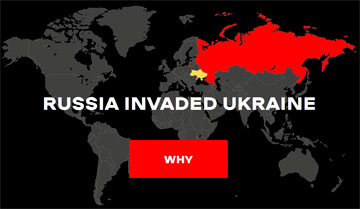Red Hat Enterprise Linux 7 update for exiv2
| Risk | Medium |
| Patch available | YES |
| Number of vulnerabilities | 1 |
| CVE-ID | CVE-2019-17402 |
| CWE-ID | CWE-119 |
| Exploitation vector | Network |
| Public exploit | N/A |
| Vulnerable software |
Red Hat Enterprise Linux for Power, little endian Operating systems & Components / Operating system Red Hat Enterprise Linux for Power, big endian Operating systems & Components / Operating system Red Hat Enterprise Linux for IBM z Systems Operating systems & Components / Operating system Red Hat Enterprise Linux for Scientific Computing Operating systems & Components / Operating system Red Hat Enterprise Linux Desktop Operating systems & Components / Operating system Red Hat Enterprise Linux Workstation Operating systems & Components / Operating system Red Hat Enterprise Linux Server Operating systems & Components / Operating system exiv2 (Red Hat package) Operating systems & Components / Operating system package or component |
| Vendor | Red Hat Inc. |
Security Bulletin
This security bulletin contains one medium risk vulnerability.
1) Buffer overflow
EUVDB-ID: #VU28797
Risk: Medium
CVSSv4.0: 4.6 [CVSS:4.0/AV:N/AC:L/AT:N/PR:N/UI:A/VC:N/VI:N/VA:H/SC:N/SI:N/SA:N/E:U/U:Green]
CVE-ID: CVE-2019-17402
CWE-ID:
CWE-119 - Memory corruption
Exploit availability: No
DescriptionThe vulnerability allows a remote attacker to execute arbitrary code on the target system.
The vulnerability exists due to a boundary in Exiv2::getULong() function in types.cpp when called from Exiv2::Internal::CiffDirectory::readDirectory in crwimage_int.cpp. A remote attacker can pass specially crafted data to the application, trigger memory corruption and crash the service.
Install updates from vendor's website.
Red Hat Enterprise Linux for Power, little endian: 7
Red Hat Enterprise Linux for Power, big endian: 7
Red Hat Enterprise Linux for IBM z Systems: 7
Red Hat Enterprise Linux for Scientific Computing: 7
Red Hat Enterprise Linux Desktop: 7
Red Hat Enterprise Linux Workstation: 7
Red Hat Enterprise Linux Server: 7
exiv2 (Red Hat package): before 0.27.0-3.el7_8
CPE2.3- cpe:2.3:o:red_hat:red_hat_enterprise_linux_for_power_little_endian:7:*:*:*:*:red_hat_enterprise_linux:*:*
- cpe:2.3:o:red_hat:red_hat_enterprise_linux_for_power_big_endian:7:*:*:*:*:red_hat_enterprise_linux:*:*
- cpe:2.3:o:red_hat:red_hat_enterprise_linux_for_ibm_z_systems:7:*:*:*:*:red_hat_enterprise_linux:*:*
- cpe:2.3:o:red_hat:red_hat_enterprise_linux_for_scientific_computing:7:*:*:*:*:red_hat_enterprise_linux:*:*
- cpe:2.3:o:red_hat:red_hat_enterprise_linux_desktop:7:*:*:*:*:red_hat_enterprise_linux:*:*
- cpe:2.3:o:red_hat:red_hat_enterprise_linux_workstation:7:*:*:*:*:red_hat_enterprise_linux:*:*
- cpe:2.3:o:red_hat:red_hat_enterprise_linux_server:7:*:*:*:*:red_hat_enterprise_linux:*:*
- cpe:2.3:a:red_hat:exiv2_redhat_package:*:*:*:*:*:red_hat_enterprise_linux:*:*
https://access.redhat.com/errata/RHSA-2020:4030
Q & A
Can this vulnerability be exploited remotely?
Yes. This vulnerability can be exploited by a remote non-authenticated attacker via the Internet.
Is there known malware, which exploits this vulnerability?
No. We are not aware of malware exploiting this vulnerability.
